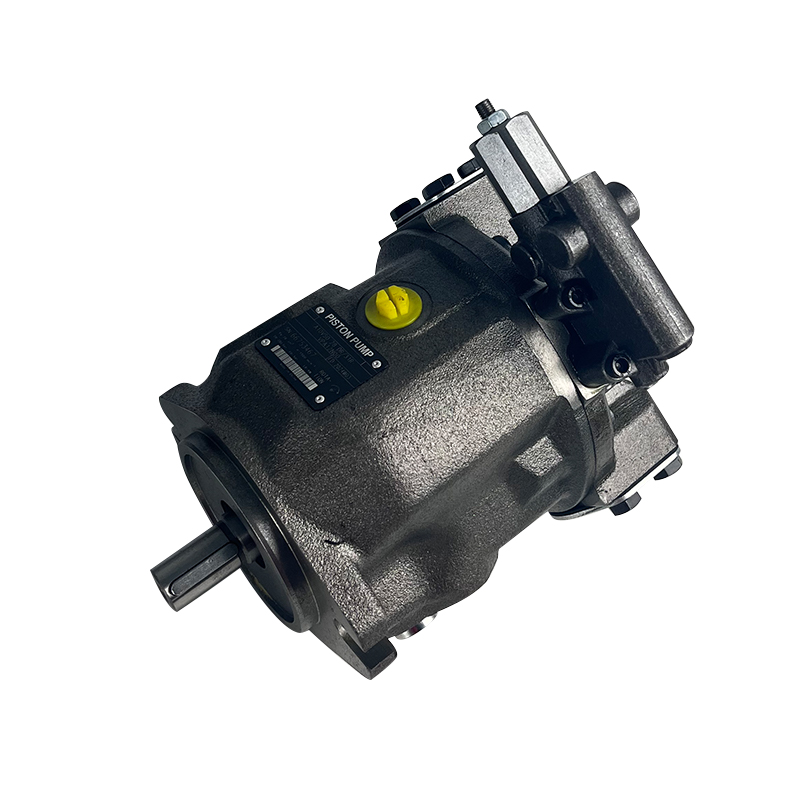Understanding the Causes of Noise in Hydraulic Piston Pumps
Hydraulic piston pumps are essential components in modern industrial and mobile hydraulic systems, converting mechanical energy into hydraulic pressure. However, excessive noise is one of the most common problems encountered during operation. To effectively reduce noise, it is crucial to first understand its sources. Typically, noise in hydraulic piston pumps originates from three main factors: mechanical vibration, fluid pulsation, and structural resonance.
Mechanical vibration results from the reciprocating motion of pistons, which can create imbalance forces if the design or assembly is not precise. Fluid pulsation occurs when the pressure within the pump fluctuates due to uneven flow delivery, often intensified at higher speeds. Structural resonance happens when the frequency of vibration coincides with the natural frequency of the housing or connected components, amplifying the perceived noise.
Optimizing Pump Design to Minimize Noise Generation
The foundation of noise reduction begins at the design stage. Manufacturers can significantly decrease noise levels by refining key structural and hydraulic parameters. For instance, improving the symmetry of the cylinder block and ensuring even piston spacing can help maintain a balanced rotation and reduce vibration. Additionally, incorporating a swash plate design with smooth transition angles minimizes sudden changes in fluid velocity, lowering pressure pulsations.
Use of Advanced Materials
Modern hydraulic piston pumps often use high-strength, lightweight alloys or composite materials that absorb vibration more effectively than conventional steel. These materials also resist deformation, maintaining precision under high loads, which further contributes to stable and quiet operation.
Enhanced Sealing and Clearance Control
Improper sealing or excessive clearance between moving parts can cause internal leakage and pressure fluctuations, both of which increase noise. Utilizing precision-ground components with tight tolerances ensures smooth piston movement, reducing hydraulic impact and mechanical contact noise.
Maintenance Practices to Control Operational Noise
Even the best-designed pump can generate excessive noise if maintenance is neglected. Regular inspection and servicing are essential for maintaining optimal performance and sound levels. Some practical maintenance measures include:
- Ensuring proper lubrication to minimize metal-to-metal friction.
- Checking for wear on pistons, bearings, and cylinder bores.
- Replacing damaged seals and gaskets to prevent internal leakage.
- Maintaining correct pump alignment with the drive motor to avoid imbalance.
Contaminated hydraulic fluid is another major source of noise and wear. Small particles can cause cavitation—tiny vapor bubbles collapsing under pressure—which produces both noise and surface damage. Using high-quality filtration systems and regularly replacing filters can significantly reduce these issues.
Reducing Noise through Installation and System Optimization
Proper installation plays a critical role in noise control. Even a well-designed and maintained pump will be noisy if installed incorrectly. To minimize noise transmission, the pump should be mounted on a rigid base equipped with vibration-damping materials, such as rubber pads or isolation mounts. Flexible couplings between the pump and motor also help absorb mechanical vibration.
Hydraulic System Layout
The layout of hydraulic lines influences how noise propagates through the system. Long or improperly supported pipes can resonate and amplify vibration. Routing hoses with smooth curves and securing them with vibration-absorbing clamps helps reduce transmitted noise. In addition, installing pulsation dampeners or accumulators can smooth pressure fluctuations, further lowering sound levels.
Applying Acoustic and Vibration Insulation Techniques
When mechanical and hydraulic optimizations are insufficient, external noise control measures can be implemented. Acoustic insulation is particularly effective in confined environments such as factory floors or vehicle cabins. Soundproof enclosures made from composite panels can reduce airborne noise by up to 15–25 dB, depending on design.
Additionally, vibration isolation mats and damping coatings on nearby structures can prevent structure-borne noise from spreading. If space allows, installing a sound barrier or acoustic panel between the pump and operator area provides further comfort and protection from continuous noise exposure.
Technological Innovations for Quieter Hydraulic Piston Pumps
Recent advancements in hydraulic technology have led to smarter and quieter piston pumps. Variable displacement pumps with electronic control can automatically adjust flow rates and pressure levels, minimizing pulsation and noise under varying loads. Furthermore, manufacturers now utilize CFD (Computational Fluid Dynamics) simulations to optimize internal flow paths and predict cavitation zones, allowing more precise and quieter designs.
Another trend is the integration of hybrid drive systems, where electric motors and pumps are synchronized through digital control. These systems ensure smooth acceleration and deceleration, reducing the sharp changes in torque that typically cause vibration and noise spikes.
Conclusion: Achieving a Balance Between Performance and Quiet Operation
Reducing noise in hydraulic piston pumps requires a holistic approach that combines design optimization, regular maintenance, proper installation, and effective insulation. While some noise is inherent to hydraulic systems, it can be significantly minimized with attention to detail and modern engineering solutions. The result is not only a quieter work environment but also improved pump efficiency, longer component life, and greater operator comfort. By adopting advanced materials, precision assembly, and smart control systems, manufacturers and users alike can achieve both high performance and low noise operation from their hydraulic piston pumps.


 English
English русский
русский Español
Español عربى
عربى

